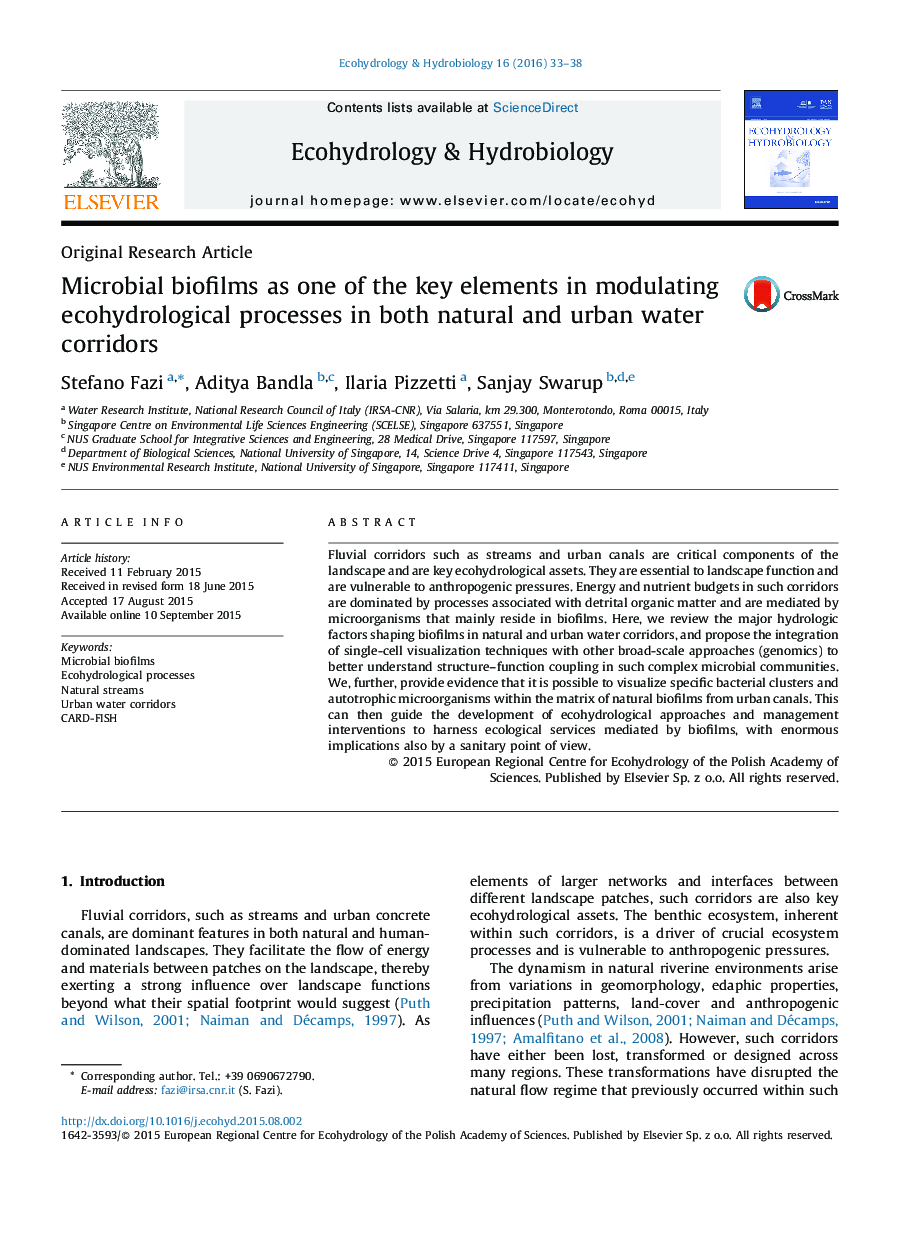| Article ID | Journal | Published Year | Pages | File Type |
|---|---|---|---|---|
| 4388008 | Ecohydrology & Hydrobiology | 2016 | 6 Pages |
Fluvial corridors such as streams and urban canals are critical components of the landscape and are key ecohydrological assets. They are essential to landscape function and are vulnerable to anthropogenic pressures. Energy and nutrient budgets in such corridors are dominated by processes associated with detrital organic matter and are mediated by microorganisms that mainly reside in biofilms. Here, we review the major hydrologic factors shaping biofilms in natural and urban water corridors, and propose the integration of single-cell visualization techniques with other broad-scale approaches (genomics) to better understand structure–function coupling in such complex microbial communities. We, further, provide evidence that it is possible to visualize specific bacterial clusters and autotrophic microorganisms within the matrix of natural biofilms from urban canals. This can then guide the development of ecohydrological approaches and management interventions to harness ecological services mediated by biofilms, with enormous implications also by a sanitary point of view.
